An Honest Look At The Best New Motorcycles For New Riders
Los Angeles, California, United States
We explore and explain our top picks for learner bikes from each of the main motorcycle segments.
Motorcycling is one of life’s great joys. The activity allows one to inject some excitement into their lives and turns getting from A-to-B from a chore into something to look forward to. But, with so many motorcycles on the market, it’s hard to know where to begin when looking for a first bike. So, we’ve compiled our picks for the very best new models from each segment, along with some general info on each category of motorcycle.
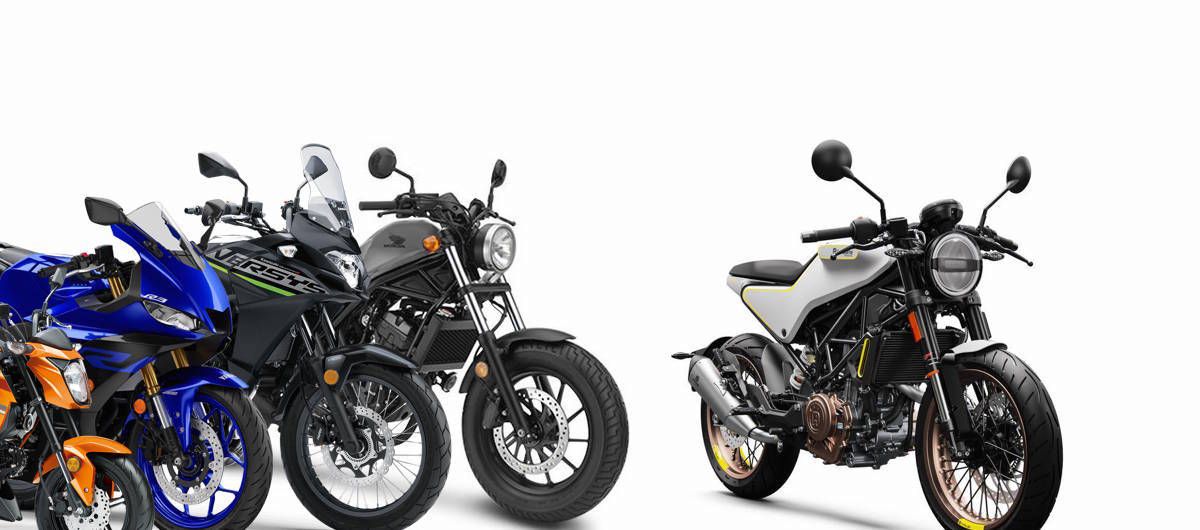
Best Learner Bikes
Why Start Small?
I hear a lot of new riders talk about buying machines that are objectively too powerful as their first bike, saying things like, “Oh, I’ll just take it super easy until I learn,” or “I’d outgrow a 300cc too fast”, and the classic, “I used to ride a dirtbike a lot as a kid”. The truth is, starting on a motorcycle that is too powerful is quite stupid for a myriad of reasons.
Full-size bikes, especially sportbikes, are incredibly powerful and offer very little room for forgiveness. Open the throttle too quickly and the thing will loop itself (wheelie uncontrollably past 12 o’clock), grab too big a handful of brake and your wheels lock up, etc. Smaller bikes weigh less and are easier to control, but with less powerful engines, they are far more forgiving and provide a much safer, more productive learning experience.
You probably wouldn’t want to learn to drive behind the wheel of a Yukon XL or a Lamborgini, as vehicles that are immensely powerful of massively sized are much more difficult to learn on. For the same reason, a 1,000cc superbike or a big-bore cruiser is a terrible choice for a first bike. In places like the UK, they use a tiered license system, where riders are at first only permitted to ride bikes 125cc’s or smaller, before getting accreditation to pilot a larger motorcycle. And the reason this is done is because it results in safer, better-trained riders who learned on an appropriate machine.
It’s 2019 & The Options Are Endless
Only five-years-ago, the entry-level options on the motorcycle market were, let’s say, “limited at best”. For years riders had the choice of a Honda Rebel 250, or a Kawasaki Ninja 250, and that was about it. Fast-forward to today, however, and there are more entry-level bikes available than ever before. No matter what style of bike you want, you can find it in an entry-level size. ADV bikes, cruisers, supersports, retros, you name it, and someone makes a small-displacement version of it.
The single most important thing to consider when shopping around for a motorcycle (be it your first or your fifth bike) is the machine's intended usage. The comparison I always draw on is to think of a motorcycle as a tool. There's no one tool that's "the best tool", though there are the "best tools for the job". For example; if you plan on doing a lot of riding both on and off-road, you probably want a dual-sport or ADV bike. If you plan on doing track days and going on canyon rides, you'll probably want a sportbike or a naked. Think about what kind of riding you plan on doing, and go from there.
Old Versus New
While there’s absolutely nothing wrong with purchasing a used motorcycle, especially as one’s first bike, there is a certain convenience factor that comes with purchasing a brand-new model off the showroom floor. Owning a motorcycle, especially an older bike, requires more frequent upkeep than your average older car does. While many riders aren’t bothered by this, it’s an important element to be aware of, especially if you’re less than mechanically inclined.
While old bikes obviously cost far less and are cheaper to insure, they also offer the benefit of being “droppable”. The reality is the vast majority of new riders will drop their bike, and probably on more than one occasion. This can mean a major headache if you scuff or break your shiny new fairings, so it’s worth not only considering a bike you’re comfortable dropping but also one that won’t break the bank should it tip over — at speed or otherwise.
-
The Standard-Retro
Timeless looks and a classic cool style, standard-retro bikes play on the public’s love for all things nostalgic/ These are basic, no-frills machines that make for great commuting bikes and weekend riders alike. With the array of small-displacement offerings in this segment, it’s definitely a category to consider when buying a first bike.
Our Pick: Cleveland Cycle Werks Ace Scrambler
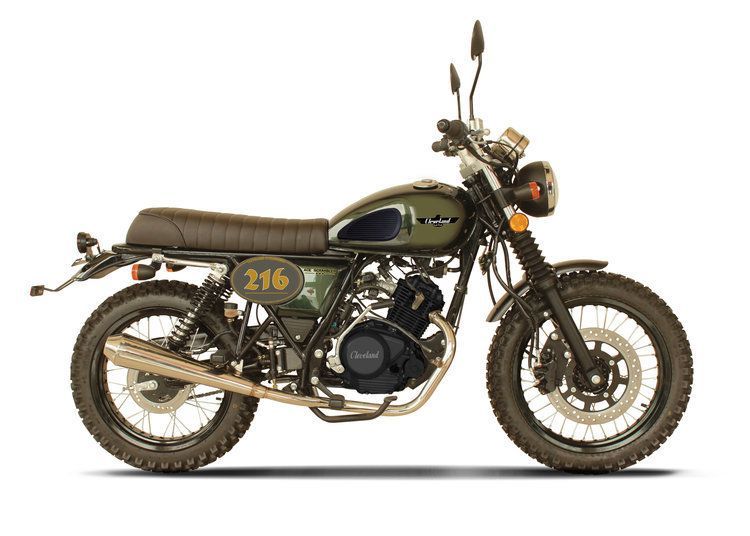
Cleveland Cycle Werks Ace Srambler
- Engine: air-cooled, 250cc, OHV, four-stroke, single-cylinder
- Price: $3,700
- Pros: capable of freeway speeds (70mph) 80mpg, and some seriously cool old-school Scrambler style, stellar value
- Cons: budget carbureted Chinese engine, no dealer network, small company, requires some DIY action
Runner Ups:
Suzuki TU250X

Suzuki TU250X
- Engine: air-cooled, 249cc, SOHC, four-stroke, single-cylinder
- Price: $6,990
- Pros: fuel-injected, considered the epitome of old-school style, proven design
- Cons: not the sexiest or the cheapest, a bit underpowered for anything other than urban use
SR400
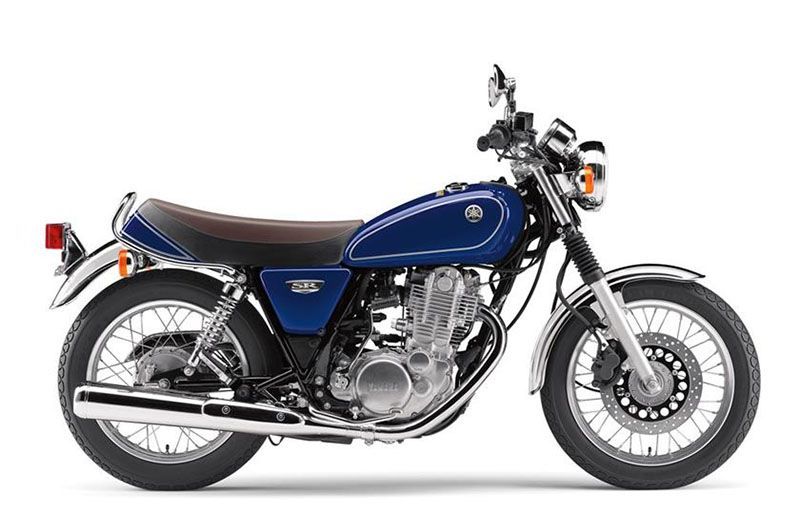
Yamaha SR400
- Engine: air-cooled four-stroke, SOHC; single-cylinder
- Price: $5,999
- Pros: fuel-injected, parts are cheap and easy to source, ideal for customization, simple maintenance
- Cons: uses a rear drum brake, has a lot of vibration at high RPM
Ducati Scrambler Sixty2
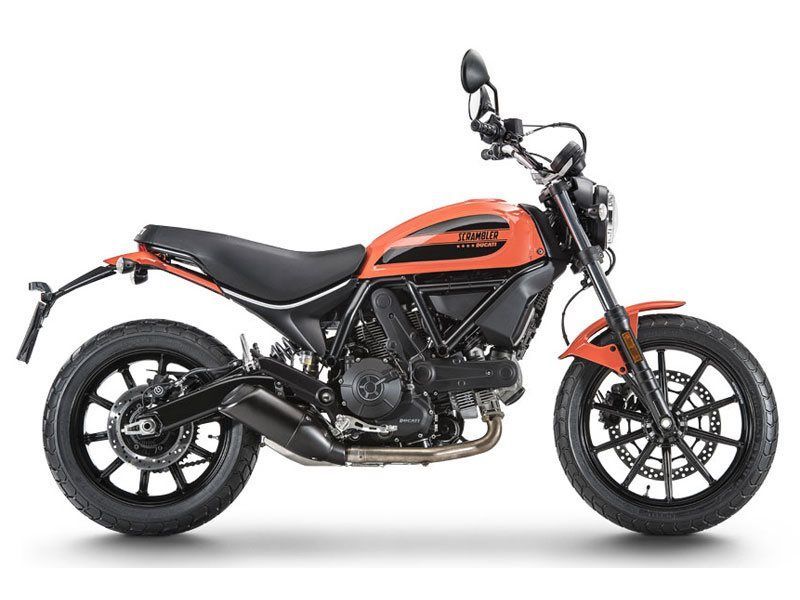
Ducati Scrambler Sixty2
-
Engine: air-cooled, 399cc L-Twin with belt-driven overhead cams and desmodromic valve actuation
-
Price: $7,995
-
Pros: It’s a f**g Ducati, offers 100mph speeds, the same appearance as the full-size Scrambler models, and it's a f Ducati!
-
Cons: cheap suspension considering the $8K price. Costly parts and maintenance. Not a great bang for your buck
-
The Dual-Sport
As the name implies, dual-sport bikes are built for going both on and off-road. They offer long-travel suspension, rugged construction, and features, and are the perfect way to get into off-road riding without getting in over your head. If you want to ride on the street and in the dirt on the same bike, you probably want a dually.
Our Pick: Honda CRF250L Rally
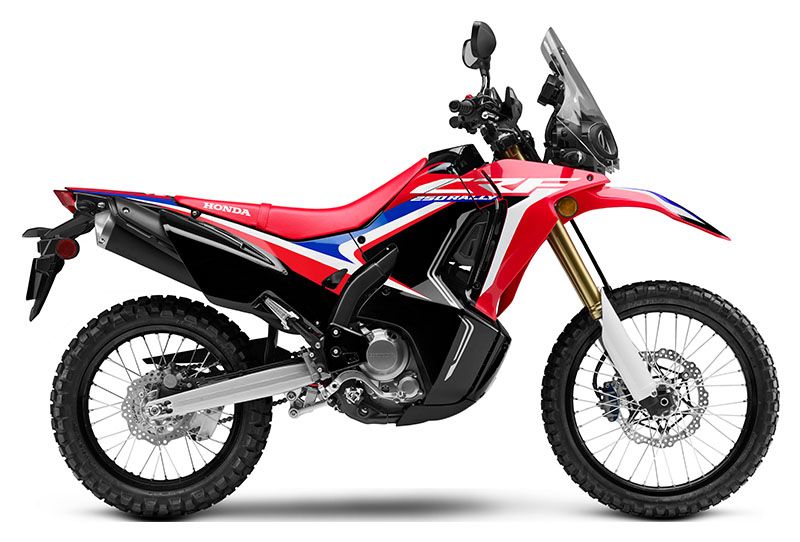
Honda CRF250L Rally
- Engine: liquid-cooled, 249.6cc, four-stroke, DOHC, single-cylinder
- Price: $5,199
- Pros: Dakar-inspired style, bullet-proof engine, great for on and off-road, touring capable
- Cons: while it's subjective, not a fan of the headlight arrangement or the exhaust setup
Runner Ups:
BMW G 310 GS
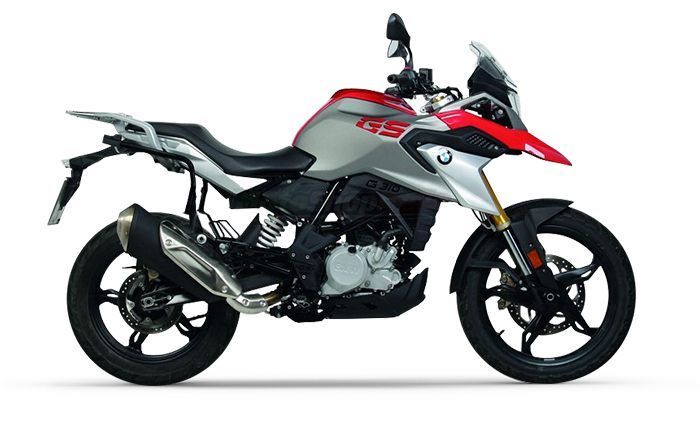
BMW G 310 GS
- Engine: liquid-cooled, 313cc, four-stroke, DOHC, single-cylinder
- Price: $5,695
- Pros: six-speed gearbox, off-road-friendly 19” front-wheel, switchable ABS, stellar fit and finish well above its price point
- Cons: The engine is outsourced and isn’t made by BMW, and the paint options aren’t the greatest, otherwise great machine
Kawasaki Versys-X 300

Kawasaki Versys-X 300
- Engine: liquid-cooled, 296cc, four-stroke, DOHC, parallel-twin-cylinder
- Price: $5,399
- Pros: nice all-around motorcycle, perfect for adventurous new riders, capable of everything but the racetrack
- Cons: while the Versys is a great bike, it’s not as attractive an offering as the BMW or the Honda in our opinion, and at roughly the same price, we'd opt for the Rally or GS
Royal Enfield Himalayan
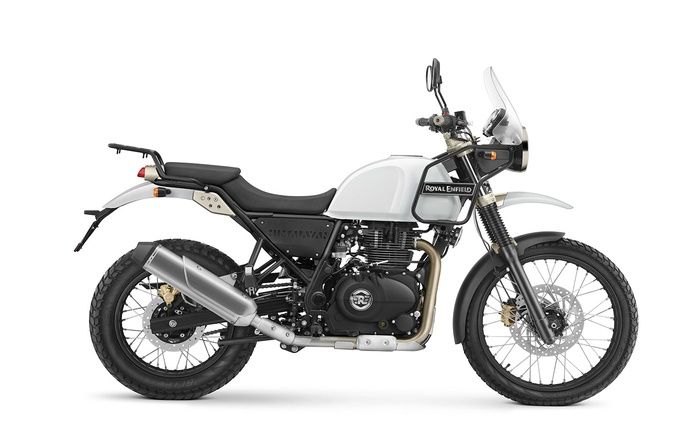
Royal Enfield Himalayan
-
Engine: air-cooled, 411cc, four-stroke, SOHC, single-cylinder
-
Price: $4,499
-
Pros: fuel-injection, cool old-school style, really cool customization platform
-
Cons: pretty basic, supposedly suffers from reliability issues, doesn't have a ton of power
-
The Mini/Novelty Bike
These machines don’t offer much in the way of practicality, however, they’re built for one thing, and that’s having fun — something they do in spades. These pint-sized runners are the cheapest new road-legal motorcycles available (excluding cheap imports), and are simply brimming with character. More suited to city streets and backroads than thoroughfares and freeways, mini/novelty bikes are an affordable way to get into riding and are probably the least intimidating bikes available.
Our Pick: Benelli TNT135
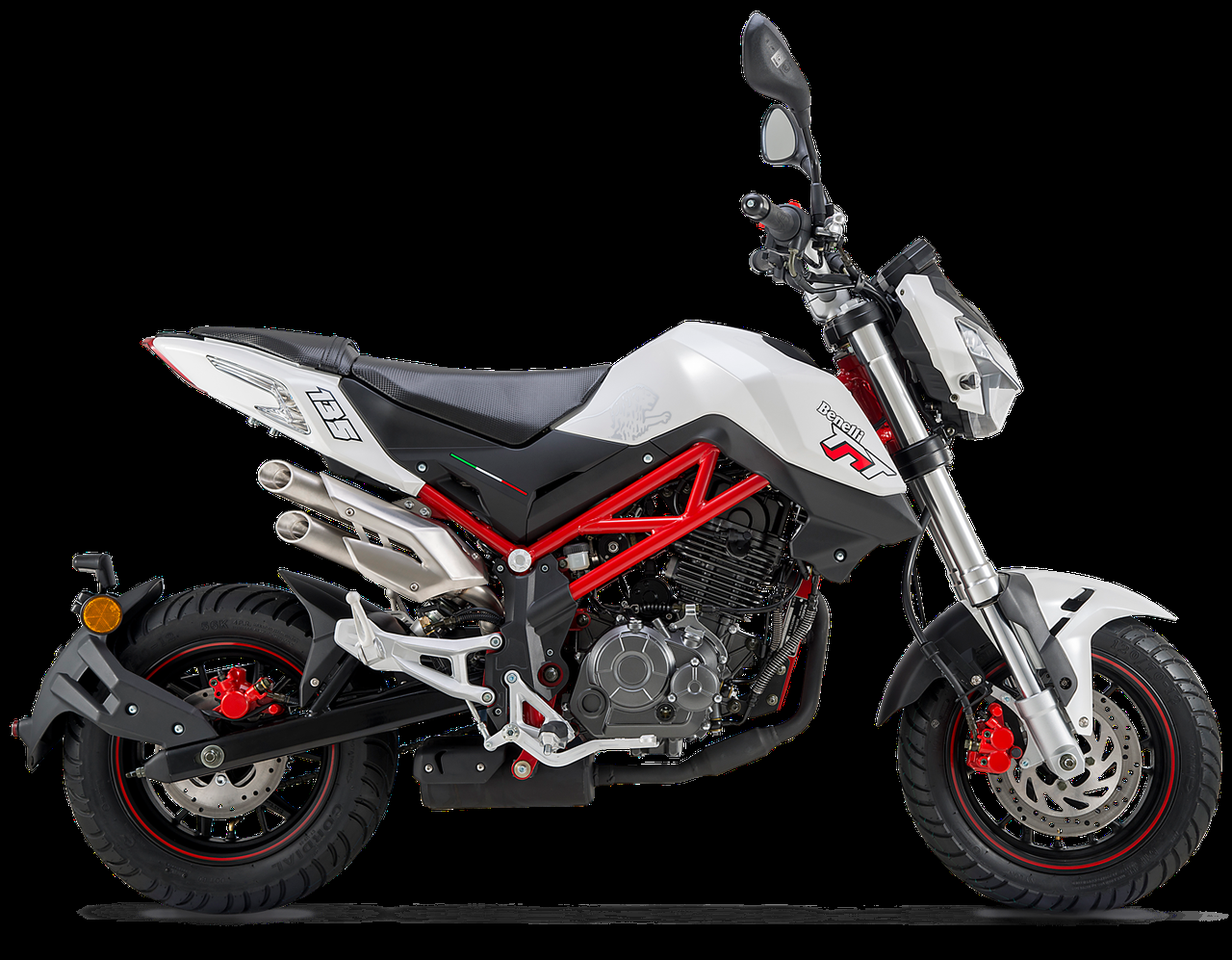
Benelli TNT135
- Engine: air-cooled, 135cc, four-stroke, SOHC, single-cylinder
- Price: $2,499
- Pros: by far the best-looking mini, and the most powerful, not to mention $700 cheaper than the Z125 Pro and $850 less than the Grom, we can't get enough of that MV Agusta-style exhaust too
- Cons: Chinese, not Italian despite the name. So far appears to be reliable though (our friends campaigned one in a 24-hour mini-bike endurance race and finished)
Runner Ups:
Honda Monkey
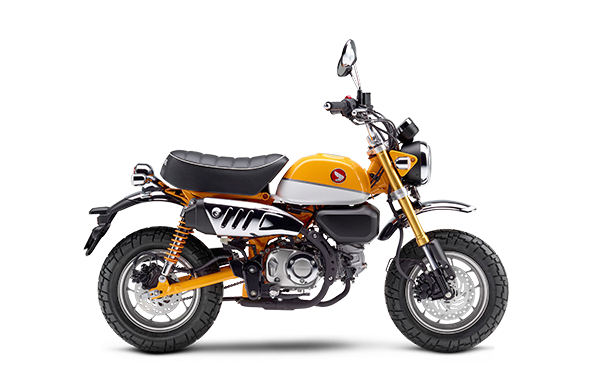
Honda Monkey
- Engine: air-cooled, 125cc, four-stroke, SOHC, single-cylinder
- Price: $3,999
- Pros: same engine as the Grom, classic Monkey style in a more practical, refined package, (ABS, LED lighting, etc)
- Cons: pricey for what it is, taller riders don’t fit, hard to justify when Honda is selling the Grom in the same showroom for $600 less (not to mention $1K more than the Z125 Pro)
Suzuki Van Van 200

Suzuki Van Van 200
- Engine: air-cooled 199cc, four-stroke, DOHC, single-cylinder
- Price: $4,649
- Pros: cute as hell, big tires, comfortable seat, ample character
- Cons: extremely versatile, however not particularly good at anything, other than possessing character
Kawasaki Z125 Pro
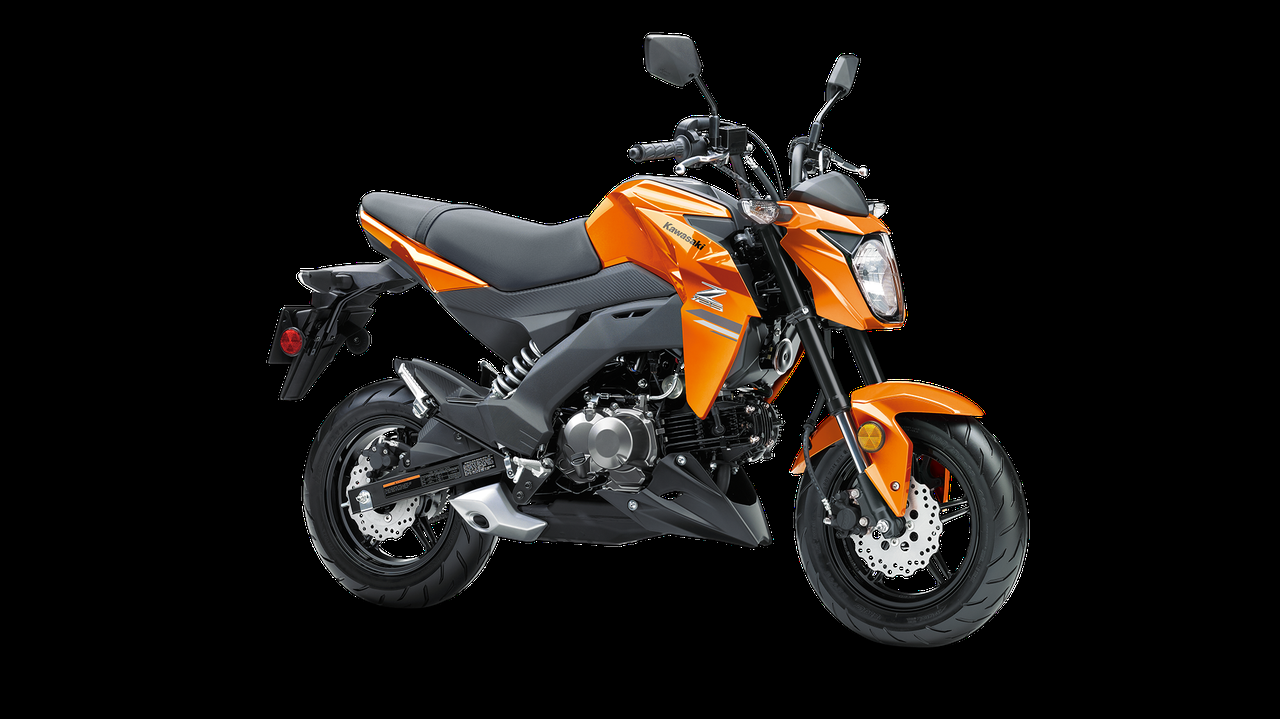
kawasaki Z125 Pro
-
Engine: air-cooled, 125cc, four-stroke, SOHC single
-
Price: $2,999
-
Pros: $3k price for a fuel-injected bike, great value, fun little toy of a scoot
-
Cons: can’t handle freeway runs, hard to justify over the new Ninja or Z125 when they're only a little bit more money
-
The Cruiser
Classic American cool. The cruiser is a low and slow style of motorcycle that takes after vintage machines from iconic American brands like Indian and Harley. What they lack in performance they make up for in comfort, and while they can at times be hard to justify on paper, their immense popularity leaves little doubt as to whether or not there’s merit to the segment. Today cruisers are not only available from manufacturers from all over the world, but they also come in entry-level-appropriate sizes. If you want to ride a cruiser, this would be where you’d want to start.
Our Pick: Honda Rebel 300
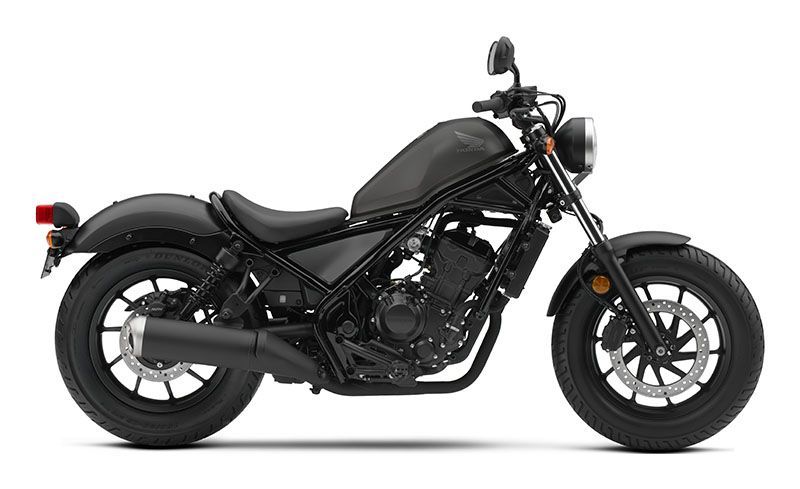
Honda Rebel 300
- Engine: liquid-cooled, 286cc, four-stroke, DOHC, single-cylinder
- Price: $4,499
- Pros: Cool style, fuel injection, also offered in a 500cc size
- Cons: cheap running gear, would have preferred better standard gear and a higher price point
Runner Ups:
Yamaha V-Star 250
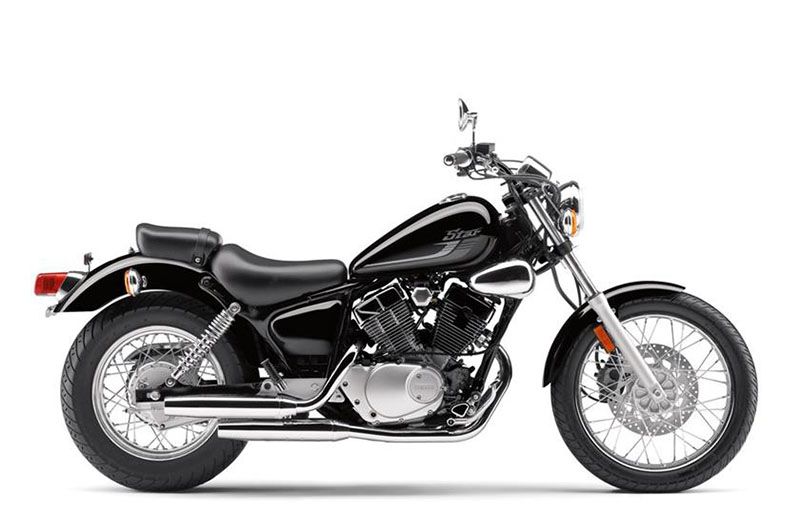
Yamaha V-Star 250
- Engine: air-cooled, 249cc, SOHC, 60-degree V-Twin
- Price: $4,349
- Pros: actual V-Twin, and not a single, fantastic cruiser-style for a small bike, great price
- Cons: carbureted
Suzuki Boulevard S40

Suzuki Boulevard S40
- Engine: air-cooled, 652cc, four-stroke, SOHC, single-cylinder
- Price: $5,799
- Pros: larger engine, albeit a single, style points for the big wheel up front, big bike style
- Cons: has a carb, massive amounts of vibration as a 650cc single, and arguably just on the verge of being too big for a new rider, the thumper looks awkward in the frame as if it's missing a rear-cylinder
Harley-Davidson Street 500
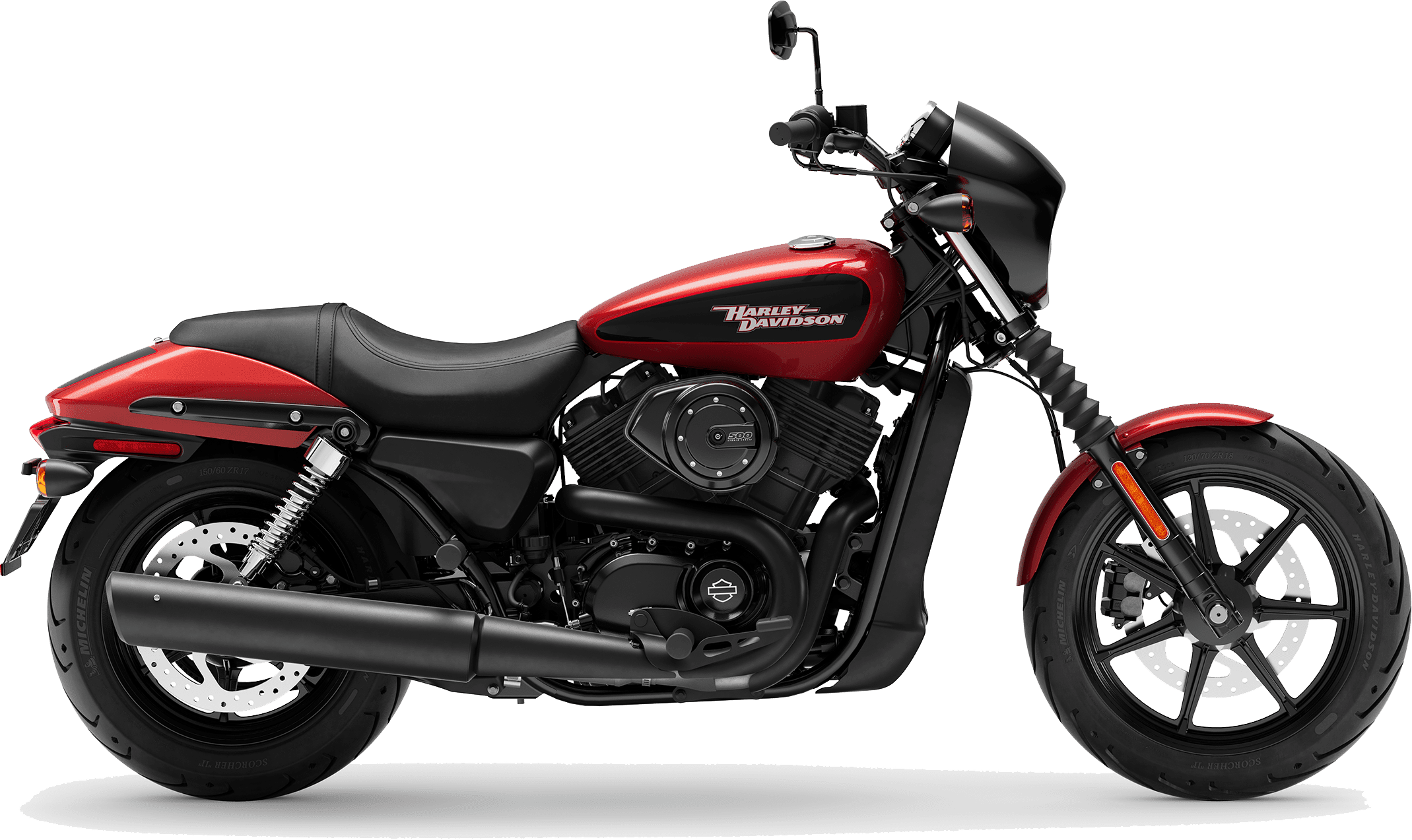
Harley-Davidson Street 500
-
Engine: liquid-cooled, 494cc, four-stroke, SOHC, V-Twin
-
Price: $6,899
-
Pros: affordable for an H-D, six-speed, fuel injected, big bike style, and most importantly; it wears a Harley-Davidson badge
-
Cons: cheap and plasticky feel for an H-D, pretty meh in terms of design, cheap for a Harley, but not cheap.
-
The Naked/Roadster
All the performance of a sportbike in a stripped down, more practical package. In a nutshell; naked bikes are sportbikes with the fairings removed, and often the engine is retuned (and geared) for street use (more low-mid-end power, less top-end). They often boast a more comfortable upright seating position too. For these reasons, many see nakeds as the perfect balance between performance and utility. If you’re looking for something sporty, you should definitely consider the naked segment.
Our Pick: Husqvarna Vitpilen 401
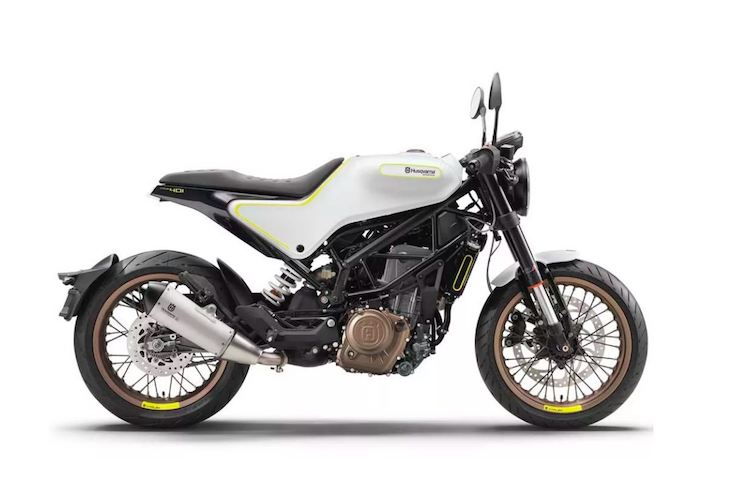
Husqvarna Vitpilen 401
- Engine: liquid-cooled, 373cc, four-stroke DOHC, single-cylinder
- Price: $6,299
- Pros: sooo sexy, top-shelf WP suspenders, Bosche EFI, six-speed, slipper clutch, ByBre brakes
- Cons: basically a KTM Duke/RC 390 reskinned and almost $2k more expensive, albeit we think it's worth it
Runner Ups:
Honda CB300R
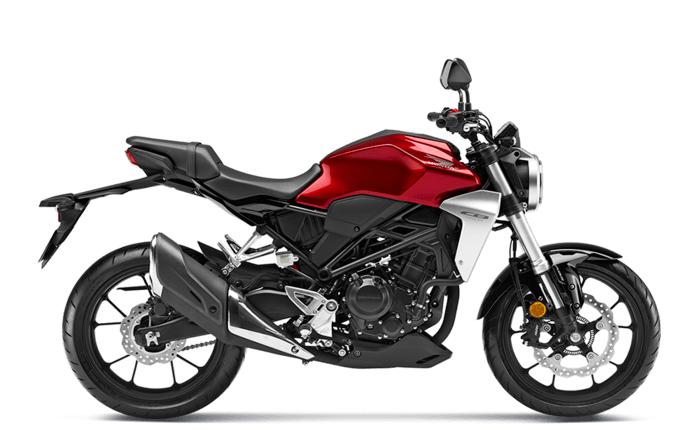
Honda CB300R
- Engine: liquid-cooled, 286cc, four-stroke, DOH, single-cylinder
- Price: $4,649 ($4,949 w/ ABS)
- Pros: dual-channel ABS, style, style, style, quality fit and finish, albeit at a price
- Cons: exhaust is atrocious, ugly fender, needs a tail cowl (IMHO)
Kawasaki Z400
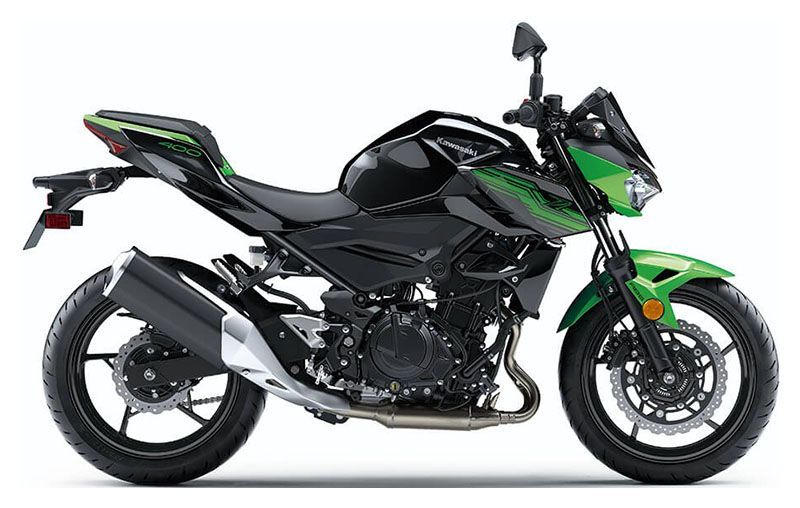
Kawasaki Z400
- Engine: liquid-cooled, 399cc, four-stroke, DOHC, parallel-twin-cylinder
- Price: $4,799
- Pros: standard Nissin ABS, lightweight rims, six-speed gearbox, proven R&D from Ninja 400 (steel trellis frame, engine
- Cons: non-adjustable non-inverted suspension
BMW G 310 R

BMW G 310 R
-
Engine: liquid-cooled, 313cc, four-stroke, DOHC, single-cylinder
-
Price: $4,750
-
Pros: 90mph speeds, cast aluminum wheels, BMW ABS, BMW moto for under $5k, touch notch fit and finish
-
Cons: The grab handles seem like an odd choice, wish it had a monoposto tail cowl
-
The Sportbike
The gateway to canyon carving and track days, sportbikes offer the pinnacle of motorcycle performance. These bikes are based on race motorcycles and are designed to go around a track as fast as possible. That means they have the best brakes, lightest weight, and most power (relative to weight), and are obviously the fastest bikes you can purchase. Sportbikes are incredibly fun, but starting out on an appropriately sized bike is crucial, not only to surviving, but to progressing as a rider.
Our Pick: Kawasaki Ninja 400
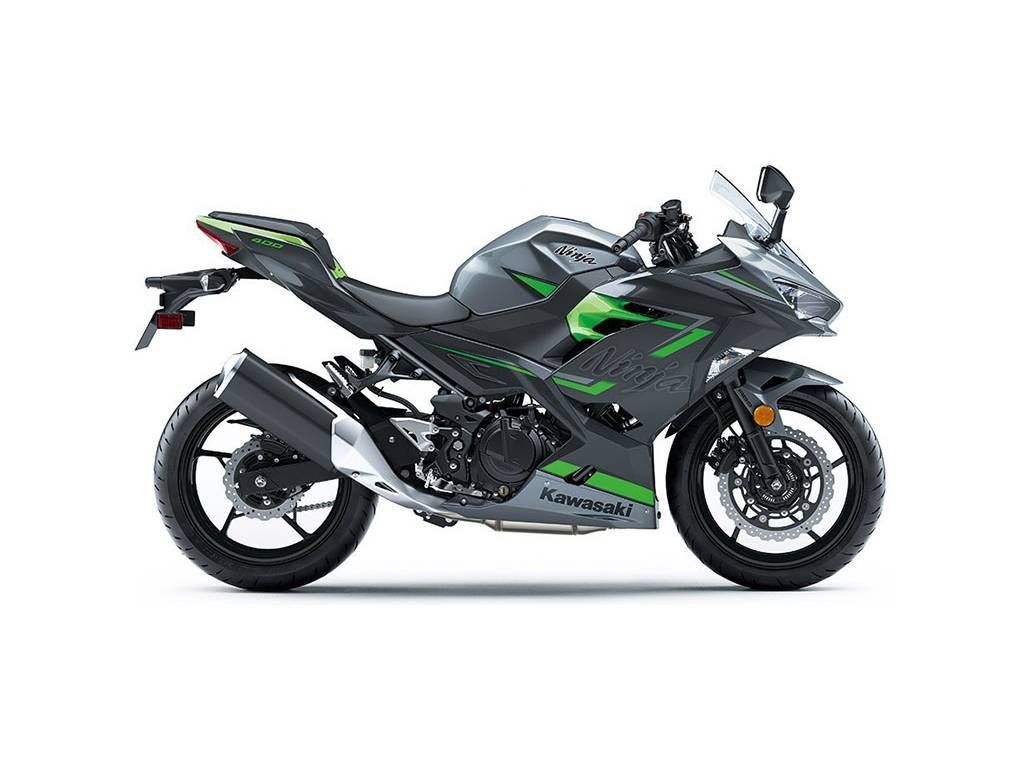
Kawasaki Ninja 400
- Engine: liquid-cooled, 399cc, four-stroke, DOHC, parallel-twin-cylinder
- Price: $4,999
- Pros: Ninja 400 is 20bs lighter than the Ninja 300, bodywork design inspired by ZX-10R
- Cons: not regulation in many race leagues
Runner Ups:
Yamaha R3
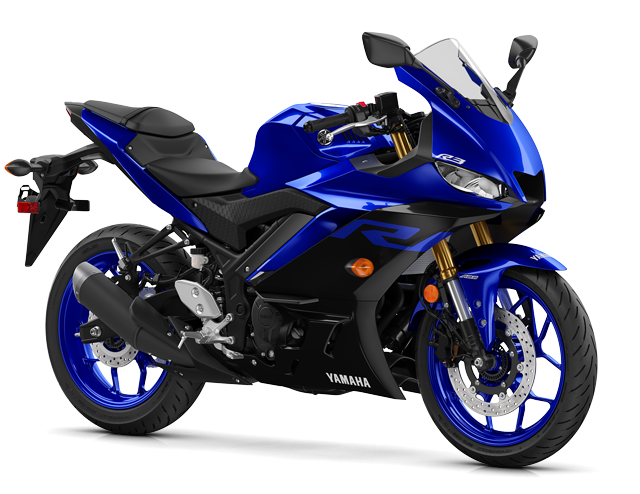
Yamaha YZF-R3
- Engine: liquid-cooled, 321cc, four-stroke, DOHC, parallel-twin-cylinder
- Price: $4,499
- Pros: MotoGP style design, razor-sharp handling, just a wonderful learner bike
- Cons: not a class leader anywhere, but a great learner bike or a second daily rider
KTM RC390
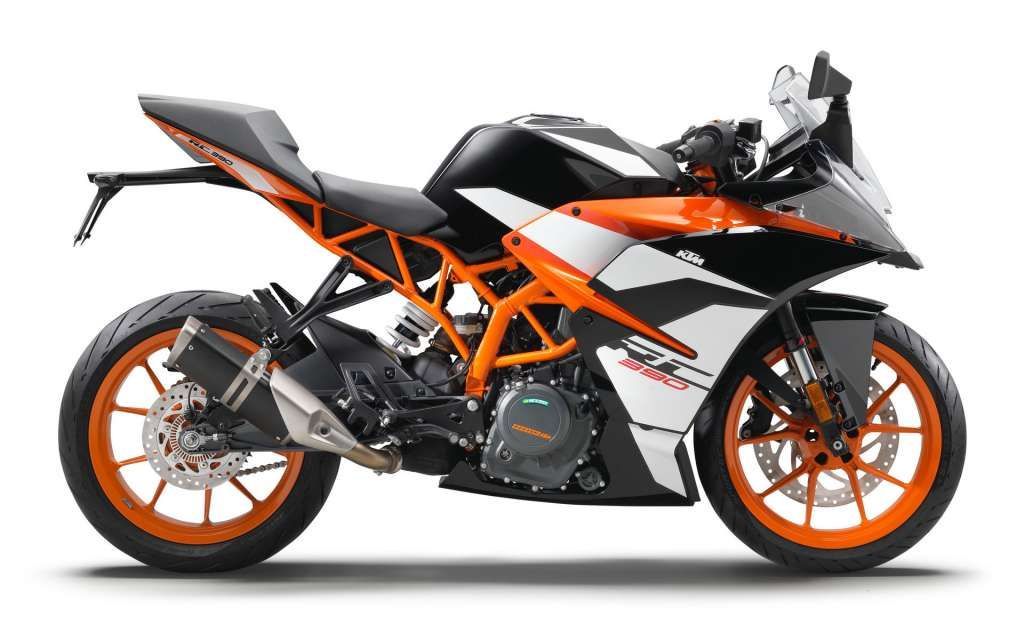
KTM RC390
- Engine: liquid-cooled, 373cc, four-stroke DOHC, single-cylinder
- Price: $5,499
- Pros: has gotten some stellar updates, killer running gear, track-focused styling, race-ready
- Cons: pricey, parts and maintenance are too
Hyosung GTR250R

Hyosung GTR250R
- Engine: air-cooled, 249cc, four-stroke, DOHC, V-Twin
- Price: $4,199
- Pros: V-twin not a single, super cheap, inverted fork
- Cons: carbureted, five-speed, no ABS, basic no-frills entry-level supersport
You must be logged in to comment
Login now
@DistractedAdventure You make some fair points. The baby Beamers are built differently than the bigger models, with the engines sourced and whatnot. Having said that, I've ridden the 310 roadster and the GS and they really do have stellar fit and finish and are fun little bikes. Can't say they're ideal for freeway stints, but for running around the city they're pretty great, though I can't say I took it in the dirt. Also, CSC has some great offerings, but part of the reason their wares are so cheap is because they forgo the dealer network thing, greatly affecting the convenience factor, though if you know how to wrench it doesn't really matter much.
What was your first bike?
The bmw 310 does not hold a candle to the Versys. Check actual reviews of people riding them. Versys is a great bike on road for a small adv bike. It will do 100 plus and the bmw can do 70 with the wind downhill.
Versys is more offroad ready as well. Kawasaki outdid themselves and bmw made a cheap Chinese starter bike with a bmw sticker slapped on the side.
If your looking for a honest representation of the bmw 310 look up the CSC250. It has way more features, is cheaper, and will do everything the fake bmw will.
btw BMW is a great brand and this should not be counted as a bmw.